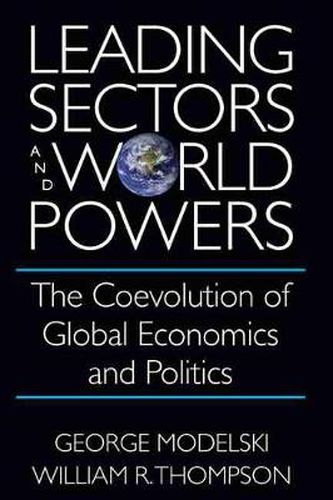Readings Newsletter
Become a Readings Member to make your shopping experience even easier.
Sign in or sign up for free!
You’re not far away from qualifying for FREE standard shipping within Australia
You’ve qualified for FREE standard shipping within Australia
The cart is loading…






Why major powers rise, fall, and fight about their changing status
The idea that political and economic power moves in coordinated cycles has long intrigued political scientists and economists, for if such a pattern exists, a model explaining the phenomenon would gain predictive qualities. In Leading Sectors and World Powers, George Modelski and William R. Thompson venture beyond previous attempts to understand this supposition by establishing an explicit connection between war, economic innovation, and world leadership. They argue that surges in economic creativity, which in turn are tied to global war, determine leadership in the global system.
Contending that K-waves (processes delineating the wax and wane of industrial sectors) appear in paired sets correlated to long-cycle shifts (phases of world order punctuated by intensive bouts of global war), Modelski and Thompson construct a linked sequence of political-economic leadership extending from tenth-century China to the contemporary United States.
$9.00 standard shipping within Australia
FREE standard shipping within Australia for orders over $100.00
Express & International shipping calculated at checkout
Why major powers rise, fall, and fight about their changing status
The idea that political and economic power moves in coordinated cycles has long intrigued political scientists and economists, for if such a pattern exists, a model explaining the phenomenon would gain predictive qualities. In Leading Sectors and World Powers, George Modelski and William R. Thompson venture beyond previous attempts to understand this supposition by establishing an explicit connection between war, economic innovation, and world leadership. They argue that surges in economic creativity, which in turn are tied to global war, determine leadership in the global system.
Contending that K-waves (processes delineating the wax and wane of industrial sectors) appear in paired sets correlated to long-cycle shifts (phases of world order punctuated by intensive bouts of global war), Modelski and Thompson construct a linked sequence of political-economic leadership extending from tenth-century China to the contemporary United States.